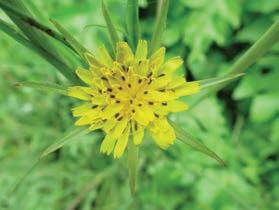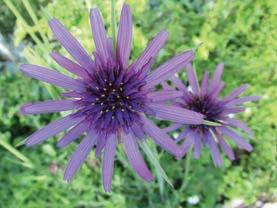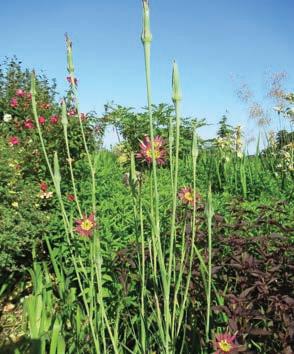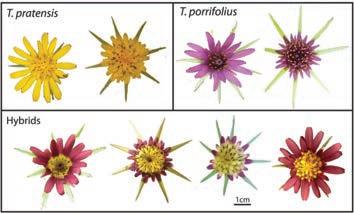
2 minute read
Goat’s-Beard Hybrid Hillary Ward
Goat’s-Beard Hybrid
- Hillary Ward
Advertisement
We live on the Herefordshire/Worcestershire border in West Malvern and this year I made an exciting discovery in the garden – a hybrid Tragopogon (a cross between T. pratensis and T. porrifolius) referred to as T. x mirabilis.
The native Goat’sbeard (Tragopogon pratensis) grows in our meadow and has seeded into the garden. Other common names include Meadow Salsify and JackGo-To- Bed-AtNoon (this refers to the plant’s habit, on sunny days, of closing the flowers by noon).
Some years ago I acquired a plant of Purple Goat’sbeard or Salsify (T. porrifolius). This species is a native of the Mediterranean region but it is widely naturalised in temperate Europe.


The hybrid has an attractive flower and like its parents is good at attracting insects.
A paper published in AOB Plants. 2015 states that hybrids between Tragopogon pratensis and T. porrifolius have been studied in experimental and natural populations for over 250 years. During this time it seems that the hybrid has not established as a new species. Records also show Tragopogon species seed from Mid-Roman middens in York, dated between 150 and 200 AD. Carl Linnaeus experimented with crossing these two species in 1759. The table below shows the variety of colour and form which can arise.
The Botanical Society of Britain and Ireland (BSBI) Atlas shows three records for Hybrid Tragopogon in 2020 onwards and 25 between 2010 and 2019. Prior to 2010 there were less than 30 records. Most hybrids were found in the Southeast of England with occasional records from other parts of the country and a couple in Wales. No records from Scotland or Ireland.
A paper published by researchers in the Czech Republic refers to studies of a distinct population of Hybrid Goat’s-beard in and around Roudnice, in the north part of Central Bohemia, which is perennial (unlike the biennial parents) and fertile. It is thought that this population has been known for 100 years. It is doubtful whether ‘my’ hybrid will display the features of the Czech plants but I will try a couple of experiments: 1) leave this year’s hybrid in situ and see if it is perennial; 2) collect seeds and see if they germinate and grow on into hybrids It is possible new hybrid plants will appear here next year from a crossing between T. pratensis and T. porrifolius. I will certainly continue to grow both parents.











